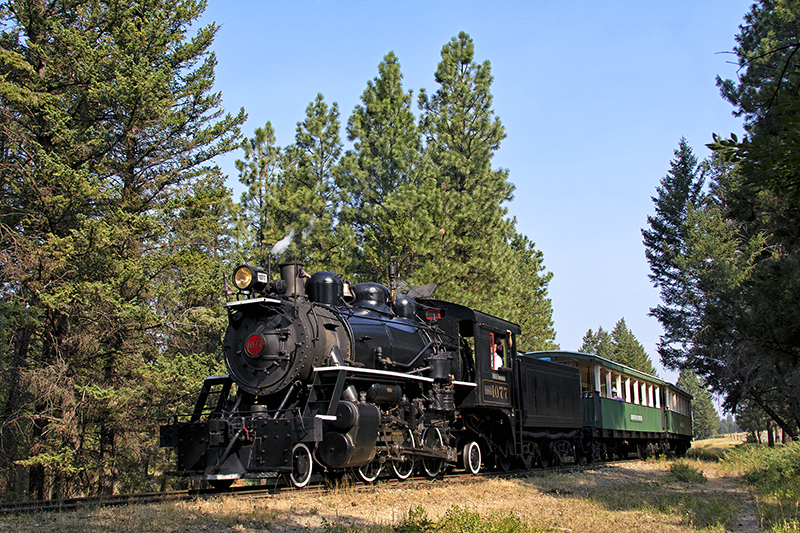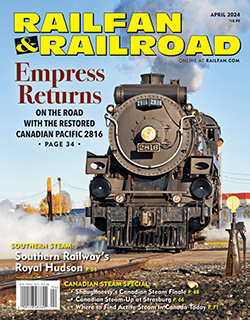Story and Photos by Justin Franz
The mountains of British Columbia might be an odd place to find a 2-6-2 steam locomotive, a class called “Prairie” because of the Midwestern granger roads that popularized them. (Chicago, Burlington & Quincy was the first to develop the type and had the largest fleet in the land.) But 2-6-2 1077, which was built by Montreal Locomotive Works in December 1923, has never known another landscape.
Since 1990, the MLW product has run at the Fort Steele Heritage Town, a museum about 15 minutes north of Cranbrook, built on the site of the first North-West Mounted Police outpost in British Columbia. The locomotive spent most of its life, however, about 400 miles west on Vancouver Island, where it worked for a number of logging companies, including MacMillan Bloedel and Victoria Lumber & Manufacturing. While the locomotive was built to burn wood, it did so for only about a year before being converted to oil; according to legend, the wood burner was sparking too many fires along the right-of-way. The locomotive worked well into the 1960s — one of the last steam locomotives to operate in regular service in British Columbia — before being purchased by the province in the early 1970s to lead its museum train, a duty it shared with ex-Canadian Pacific 2-8-0 3716 (best known as the backup locomotive to BC Rail’s “Royal Hudson” 2860; today, 3716 runs on Kettle Valley Railway). The hardworking, log-hauling 2-6-2 got a glow-up for its new duty, including a gold coat of arms where the number plate once was and a CP-inspired paint scheme with yellow lettering and yellow striping on the tender and cab. On the front end of the locomotive, it also got a nameplate that read British Columbia, leaving no doubt as to who owned it.
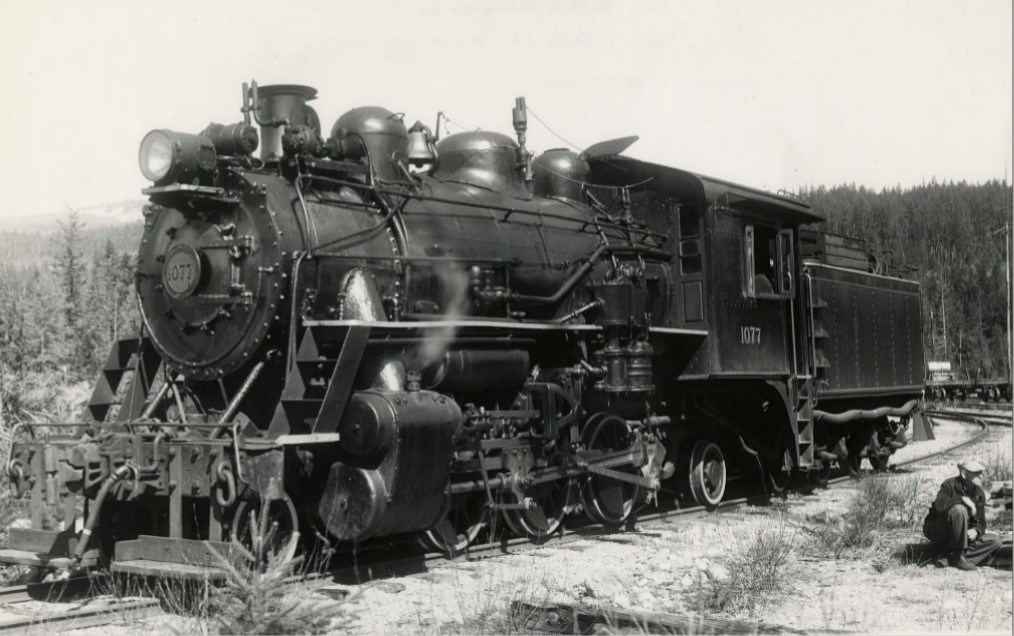 ABOVE: Locomotive 1077 as it appeared in the mid-20th century when working on a logging railroad on Vancouver Island. Photo Courtesy of Fort Steele Heritage Town.
ABOVE: Locomotive 1077 as it appeared in the mid-20th century when working on a logging railroad on Vancouver Island. Photo Courtesy of Fort Steele Heritage Town.
After leading the museum train, the locomotive was put into storage for a few years. In the 1980s, it was used (along with 3716) in the film “The Journey of Natty Gann.” Years later, it also made an appearance in 2000’s “Shanghai Noon.” In May 1986, the locomotive attended SteamExpo, part of Vancouver’s World’s Fair. The event brought together locomotives from all over the U.S. and Canada. In 1990, locomotive 1077 was sent to Fort Steele, where it became the third locomotive to run at the heritage town.
The Fort Steele site, located on the bluffs high above the Kootenay and St. Mary rivers, was designated a historic landmark in 1925 and turned into a museum with replica buildings in the 1960s. As part of that development, a 2.5-mile stretch of track was constructed with loops at either end — not unlike a dog bone track plan on a model railroad. The first steam locomotive to run there was an 0-4-4T built by North British Locomotive Company in 1895 for the third Duke of Sutherland, who had financed an extension of the Highland Railway in Scotland to serve one of his castles. The locomotive was named after his castle, Dunrobin. After British Railways revoked the Duke’s ability to have his own train in 1949, the locomotive and its cars were sold and eventually ended up in a private collection in Canada. The Dunrobin was put on display for a few years before being purchased by the provincial government. In 1968, it was restored to service and sent to Fort Steele to operate at the museum. In 1971, it was briefly reunited with royalty when Queen Elizabeth visited the museum. A few years after the British locomotive arrived at Fort Steele, it was joined by a three-truck Shay locomotive that, like 1077, spent much of its career on Vancouver Island.
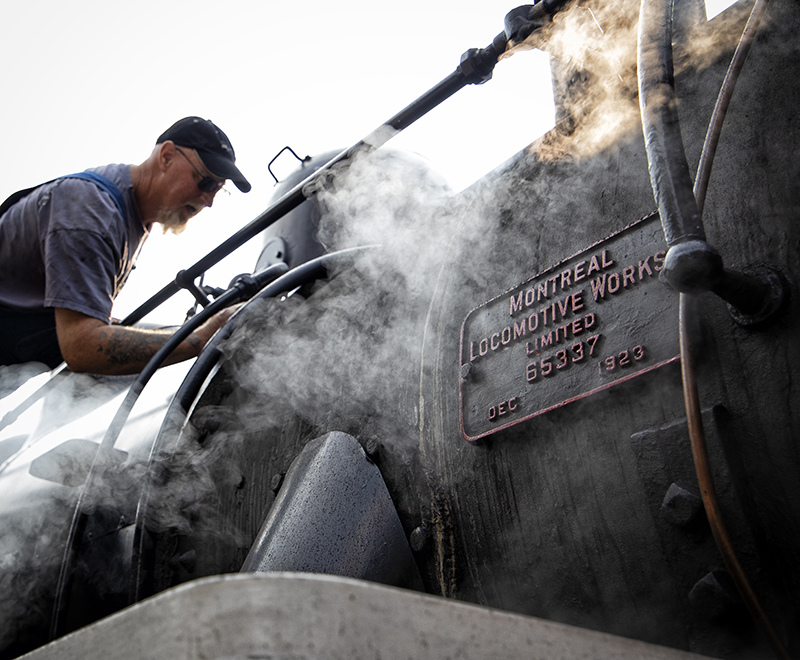 Locomotive 1077 was built in December 1923, by the Montreal Locomotive Works.
Locomotive 1077 was built in December 1923, by the Montreal Locomotive Works.
Eventually, the English locomotive was sent home to Europe and mechanical issues sidelined the Shay, paving the way for the arrival of the small 2-6-2 locomotive to become the main power at Fort Steele. Besides the locomotives, the museum has a small fleet of rolling stock, some of which operate and some that are on display or awaiting repair. The fleet includes a former Canadian Pacific caboose (CP is the hometown road, after all); a snowplow; a coach from Morrissey, Fernie & Michel Railway (a short line in the area that served coal mines until the 1950s); and a British parlor car that had come over with the Dunrobin in the 1960s. The parlor car is used on the excursions when ridership warrants, along with two open-air cars made from old flatcars.
During the summer, usually from early July until mid-September, the museum offers excursions daily except when the locomotive is down for maintenance. The brief 30-minute trips depart at 11:00am, 12:00pm, 1:30pm, and 2:30pm. The excursions depart a small depot on the grounds and head through a forest to an overlook high above the Kootenay and St. Mary rivers where passengers can get off and take in the scenery (and possibly spy a freight train on nearby CP). After a few minutes, the passengers load back up and 1077 whistles off for the return trip. Train rides cost $20 Canadian for adults and $15 for children and seniors. Children under five ride for free. The ride is not included in admission to the general museum (in the summer that’s $25 for adults and $20 for kids and seniors) but it’s possible to just ride the train and not see the rest of the heritage town. For more information visit FortSteele.ca.
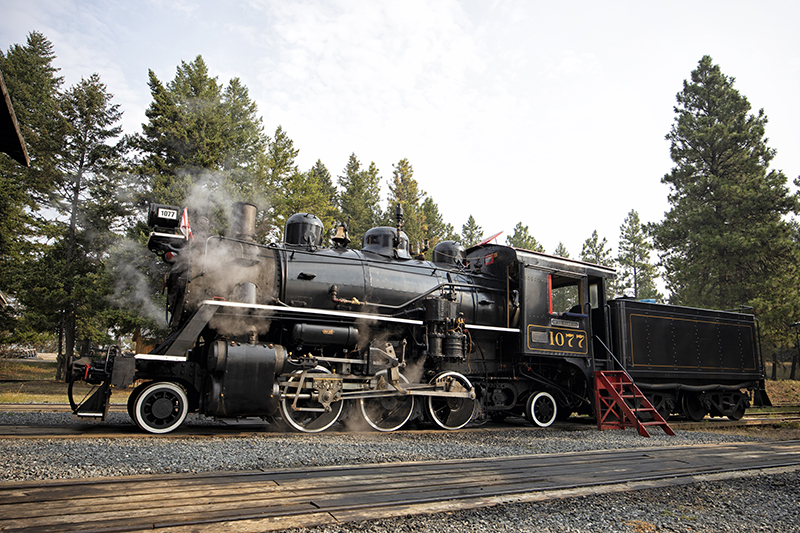
Steaming on a Saturday Morning
Fort Steele Heritage Town’s 2-6-2 simmers outside the shop on a warm and smoky July morning. The locomotive wears a numbering style inspired by the Canadian Pacific’s own steam-era practices.
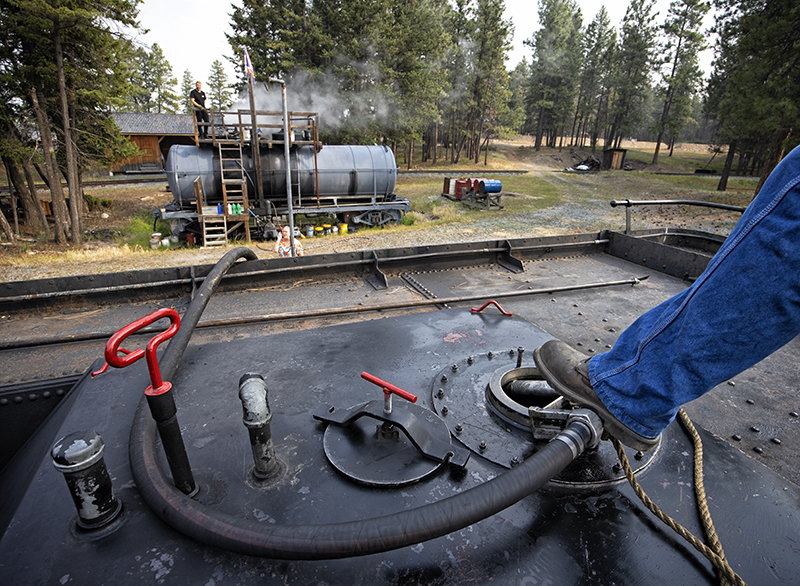
Fill ‘er Up
The Fort Steele Heritage Town crew puts oil in the tender of locomotive 1077 on the morning of July 15, 2023. Steam from the locomotive is used to pump the oil from the tank car back to the locomotive.
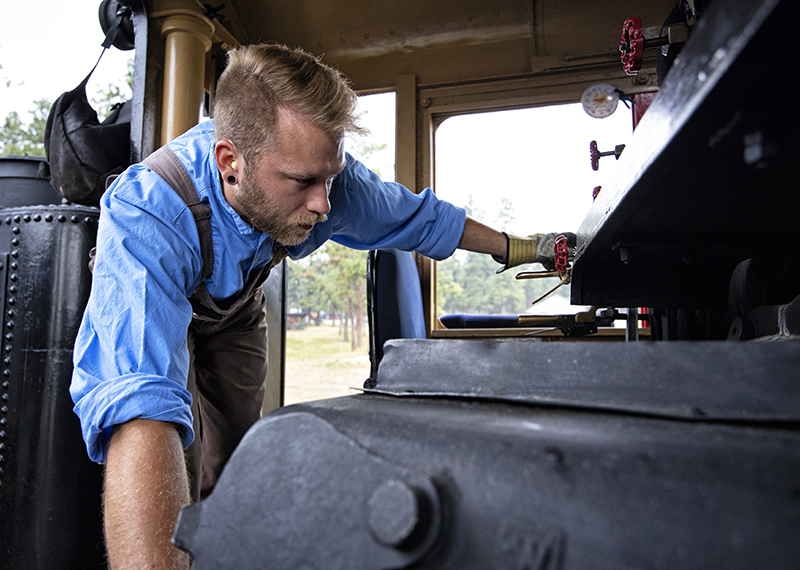
Checking the Fire
Fireman Jeff Roshau checks the fire of locomotive 1077 at the Fort Steele Heritage Town.
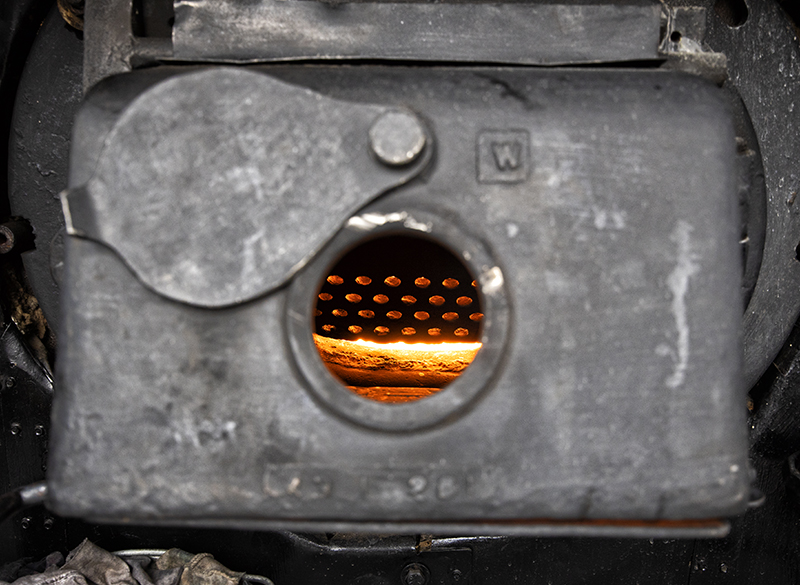
The Belly of the Beast
Locomotive 1077 simmers between runs at the Fort Steele Heritage Town.
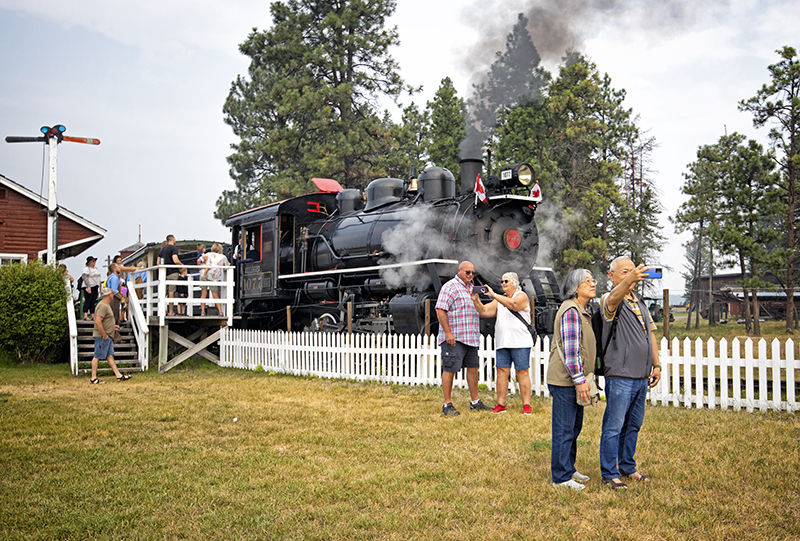
Selfies and Steam
Passengers snap selfies in front of locomotive 1077 before an excursion at the Fort Steele Heritage Town.
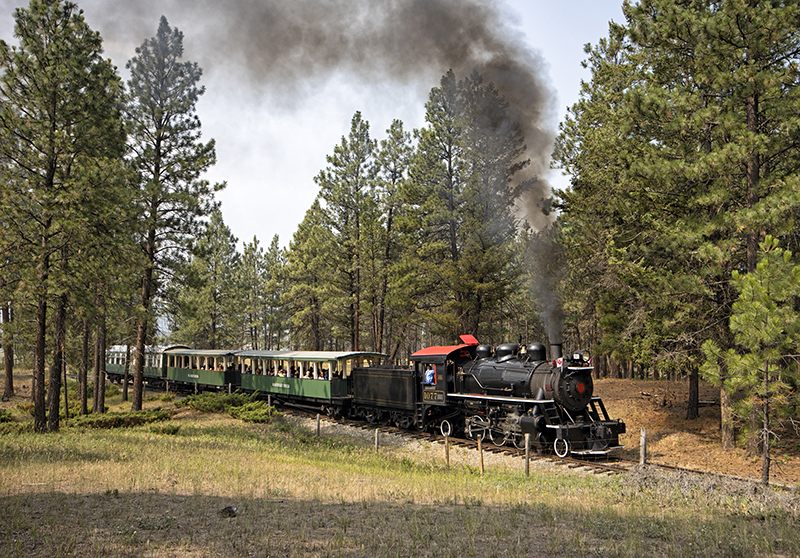
First Run
Locomotive 1077 works up the surprisingly steep grade out of the station at Fort Steele on the first run if July 15, 2023.



